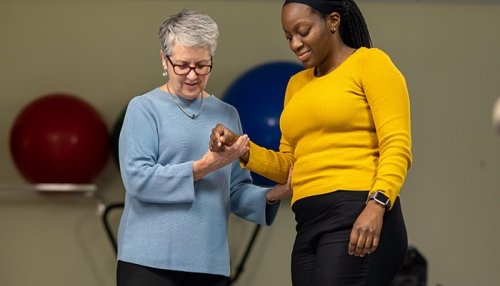Exercise Aids Those with Parkinson’s Disease
Exercises to manage Parkinson's Disease.

Exercising on a consistent basis is an important aspect of managing Parkinson’s Disease (PD). Exercise has been shown to promote strength, balance, flexibility, coordination, and improve cognition. Strength training is one form of exercise which involves resistance in the form of weights, resistance bands, or common objects around your home, like cans or a water bottle. Regular strength training can improve PD symptoms and make dopamine use more efficient. Strength training also improves your posture which helps with breathing and speech. If you are prone to falling, exercise in a sitting position or with someone trained to assist you.
Aerobic exercise involves elevating your heart rate while doing an activity such as biking. Stationary biking is an aerobic exercise that is safe for those with PD because it decreases the likelihood of falling. It is recommended to engage in aerobic activity 30 minutes per day, 3 to 5 times a week at 50-80% of maximum heart rate (maximum heart rate equals 220 minus your age). For example, if you are 65 years old your maximum heart rate is 155 and your exercise heart rate would be 78 – 124 beats per minute. Dancing is a fun way to engage in aerobic exercise. Consider dancing with a partner, alone to your favorite songs, or seek out a dance class specifically for those with PD. In recent studies, those who engaged in aerobic activity had less brain shrinkage, improved brain connections, and improved cognitive control. Whatever exercise you chose, remember safety first.
A physical therapist or fitness expert can correctly design an exercise program for those with PD. Many local YMCAs and park districts have exercise programs for people with Parkinson’s Disease. If you are hesitant to begin, have a more involved problem or your symptoms have worsened, a visit with a physical therapist would be a good place to start. Always discuss the specific exercises you are interested in with your physician prior to beginning an exercise program. The bottom line – movement and exercise are important for those who deal with Parkinson’s Disease.
Teri Elliott-Burke, PT, D.P.T., M.H.S., College of Health Sciences, Physical Therapy Program, Physical Therapy Institute.
Reference: Parkinson's Foundation



